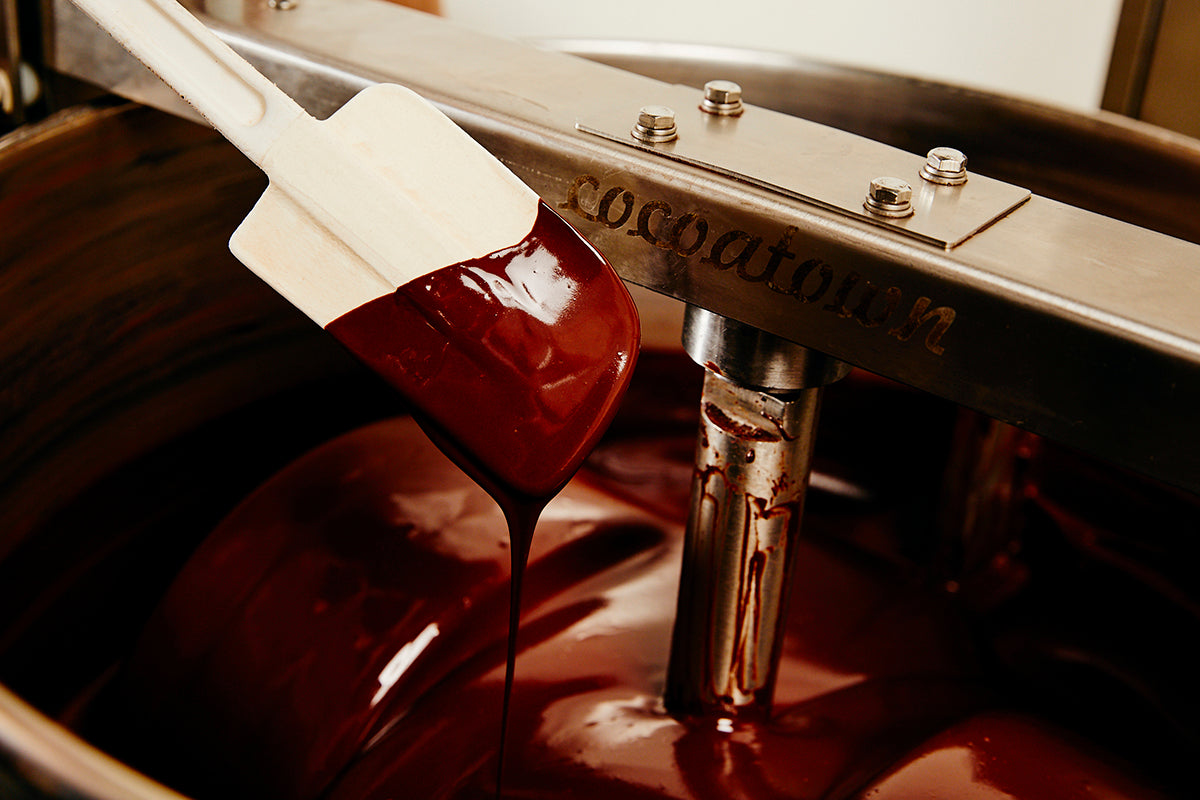
Hot Drinking Chocolate Season Has Begun
And we'll help you make the perfect cup.
Fall temperatures may be unpredictable, but nothing so surely announces the beginning of hot drinking chocolate season than the fire of sunlight that starts to spark leaves gold and glowing. Early this morning, I surprised my kids with two steaming mugs of hot drinking chocolate as they tumbled out of bed. I couldn’t help it—the trees outside were gorgeous. And their breakfast of hot drinking chocolate, sourdough toast, and sliced granny smith apples reminded me that I need to share this goodness.
Under the assumption that you too, might enjoy a cup of drinking chocolate today, I’ve got two different recipes for you. The first is a luxurious step up from hot cocoa, the second is the chocolate equivalent of a shot of espresso, which I’ll be referring to as sipping chocolate.
“But wait,” you might be saying. “What is hot drinking chocolate and what is hot cocoa? And what now about sipping chocolate?” I’m glad you asked.
Here’s a super quick primer (and feel free to skip right to the recipes if you’re already in the know):

It’s time for drinking chocolate and ‘mallows.
Hot Cocoa (remember those little paper packets?) is made of sugar, milk powder, and cocoa powder. All that’s required is a little hot water for an instant chocolate drink.
Drinking Chocolate, on the other hand, is made of dark chocolate, slowly melted in a small pot with simmering milk. There are lots of ways to make this drink your own, and I’ve got a simple recipe to get you started.
Sipping Chocolate is also made of real dark chocolate and milk, but with way less milk. As its name suggests, this intensely chocolatey drink is meant to be savored slowly. And probably by dark chocolate-loving adults only.
If you want to know more about the fascinating history of drinking chocolate that spans centuries and continents, keep reading past the recipes for a short (and delicious) history lesson.


Whether you’re the kind of person who follows a recipe to the T or whether you use them as a springboard, I’m pretty sure you’ll love tinkering with chocolate.
Okay, you got this far and I promised you a short history lesson. I’m also going to sneak in a surprise recipe for those of you smarty pants who like to learn!
It’s not from Europe. You, of course, probably already know that, but a lot of people still think of Europe when they think of the origins of chocolate. Anthropologists have long known that beginning more than 3,000 years ago, Mesoamerican civilizations like the Olmecs, and later the Aztecs and Mayans, consumed a frothy, fortifying drink called Xocolatl, made of roasted cacao beans, spices, cornmeal and water.
More recently, however, scientists have discovered evidence in Ecuador of cacao cultivation and consumption from a millennium earlier, approximately 3,000 BCE.
Fast forward to the age of conquest, when Spanish conquistadors observed the highly ritualized preparation and consumption of Xocolatl by Aztec elites and brought cacao back to the Spanish royal court. The Spanish royals added sugar (which was not present at that time in Mesoamerica) to the hot, spicy and bitter drink made of roasted cacao and water, bringing it closer to the version of hot chocolate we all know.
Hot chocolate was a secret jealously guarded by the Spanish royal court but word eventually leaked and the drink spread from royal family to royal family across Europe. It entered England at about the same time as coffee and both coffee houses and chocolate houses catered to the English wealthy. Unsurprisingly, it was during the Industrial Revolution in Europe when it became possible to mass produce chocolate, bringing it to everyday people, but also causing the historic value of chocolate (remember: highly prized by the wealthy and powerful in the pre-Colombian Americas as well as in Europe) to become obscured and forgotten in the process.
There’s so much more to say about the history of chocolate, but I’ll save that for another day. If you are intrigued and want to learn more, I encourage you to check out The True History of Chocolate by Sophie and Michael Coe. Here’s that bonus recipe I promised you:
Xocolatl's Pot de Creme

Credit: Flavors Magazine
(Here’s a secret—our powdered drinking chocolate can be used exactly like a 55% dark baking chocolate). If you want an easy, grown up version of chocolate pudding this holiday season, try this:
- 14 oz heavy cream
- 6 level TBS powdered drinking chocolate
- 6 egg yolks (keep the whites for another recipe)
- 1 level TBS sugar
- 1/2 tsp salt
-
Get 6-10 charming receptacles ready (shrimp cocktail glasses, liqueur glasses, ramekins, little mason jars, egg cups or anything else that captures your imagination)
-
Heat the cream on low heat. Stir to avoid a skin forming and take off the heat when small bubbles form at the edges. Do not let boil. Remove from heat.
-
In a pan suspended over a pot of barely simmering water, melt the chocolate, stirring to avoid burning.
-
Once the chocolate is melted, take off heat and add sugar, salt.
-
Once the chocolate is cool, stir in the egg yolks until fully incorporated.
-
Pour the cream into the chocolate mixture.
-
Replace the pan on the pot of barely simmering water and stir constantly with a spoon until you no longer hear/feel the sugar grains and the chocolate is viscous enough to coat the back of your spoon like syrup.
- Dry the water off the bottom of your pan and pour the mixture into your vessels. Chill in fridge for 2-3 hours or until the mixture has only a slight jiggle in the middle. Garnish with a square of chocolate, a sprig of peppermint, a jalapeno slice, or anything else your heart desires right before serving.
In chocolate + cheer,

